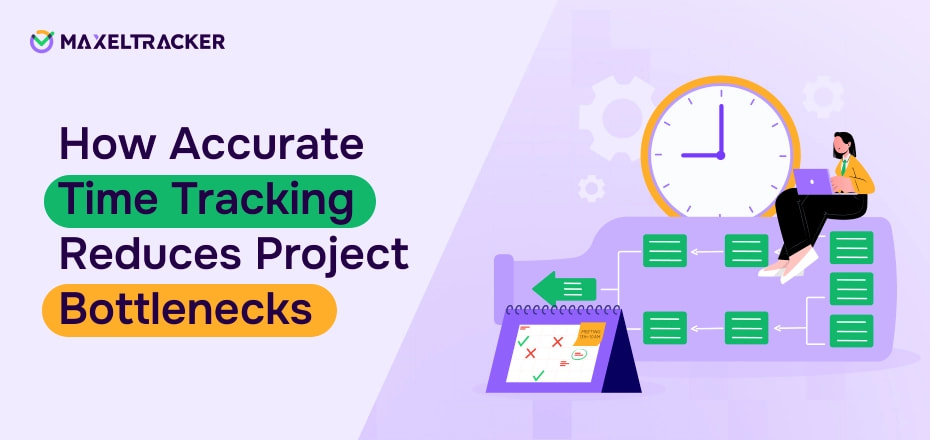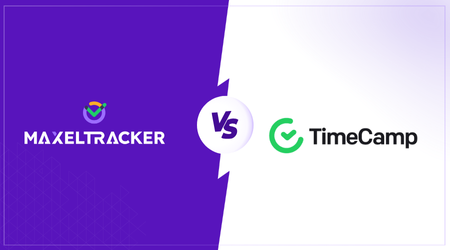

Successful project management relies on many factors, and one that’s often overlooked is accurate time tracking. Precise tracking not only keeps projects on schedule and within budget but also strengthens resource allocation and improves future planning.
When teams don’t track their time properly, managers are left guessing how long tasks actually take, where delays are creeping in, or whether resources are being used effectively. This lack of visibility often leads to missed deadlines, budget overruns, and frustrated clients. In fact, studies show that poor time management is one of the top reasons projects fail, causing nearly 25% of projects to miss their original deadlines.
On the other hand, consistent and accurate Productivity tracking gives project managers the data they need to spot bottlenecks early, redistribute workloads, and set more realistic deadlines. It creates a record of effort versus output, helping teams learn from past projects and improve estimation accuracy by up to 23%, reducing the risk of under- or over-committing.
In this article, we’ll dive deeper into why time tracking is essential for project management, explore how it helps prevent delays, and share practical strategies you can apply to implement it effectively within your team.
So, why does time tracking matter so much in project management? At its core, it gives managers clear visibility into how long tasks take and where bottlenecks may appear. With this insight, leaders can make timely adjustments to keep projects moving forward and improve overall productivity.
For employees tracking promotes focus and accountability. It provides a fair and transparent way to measure working hours, ensuring that contributions are recognized accurately. Beyond that, time tracking unlocks several additional benefits ranging from better resource allocation to improved future project planning.
Time tracking is a vital tool for effective project planning. By recording how long tasks actually take, project managers can design timelines and schedules that are realistic instead of based on guesswork. This data-driven approach makes it easier to create accurate estimates for future projects, helping teams avoid underestimating workloads or overcommitting resources.
In complex projects with many dependencies, time-tracking insights highlight where delays are occurring. If a task is running longer than planned and blocking others, managers can spot the issue quickly and adjust. With this visibility, they can reallocate resources, shift priorities, and make informed decisions to keep the overall project on schedule.
Time tracking provides actionable insights that help companies allocate resources more effectively. By analyzing how employees spend their work hours, managers can identify patterns of resource utilization and spot potential gaps. This ensures that the right people are matched with the right tasks based on actual needs rather than assumptions.
It also highlights which projects or activities demand the most effort. If certain team members consistently log extra hours on specific tasks, it may signal an imbalance in workload. With this visibility, remote managers can redistribute responsibilities, bring in additional support, or streamline processes, leading to fairer workloads and improved team efficiency.
Accurate time tracking is key to estimating project costs and keeping execution within budget. By monitoring how much time your team spends on different tasks, you gain a clear picture of the project’s true costs and can spot potential overruns before they escalate. Modern time-tracking software makes this process both simpler and more precise.
Cost estimates are often based on assumptions drawn from past experience or research, but actual task durations can vary significantly. Tracking time in real projects provides hard data that helps refine these estimates. Over time, this data-driven approach leads to more accurate forecasting, smarter budgeting, and better financial control across future projects.
Understanding how your team spends its time is critical to improving both productivity and efficiency. To get the most value from time tracking, it’s important to establish clear practices that encourage accuracy and consistency. Below are some practical tips to help you build an effective time-tracking routine for your business.
Clear time-tracking policies are essential for building transparency and accountability across the team. Employees should understand how their time data will be used and feel confident that it serves a fair, well-defined purpose. With consistent practices and company-wide guidelines, time tracking software can deliver accurate insights that drive efficiency and productivity.
It’s equally important to communicate openly with your team. Emphasize that the goal of time tracking is to improve transparency, streamline processes, and enhance productivity, not to micromanage. When supported by clear policies and leadership, time-tracking becomes a valuable tool for optimizing workflows and creating a more balanced work environment.
Accurate data is the foundation of effective decision-making in project management. When time entries are delayed or added retrospectively, the information can be incomplete or misleading. Time-tracking software solves this challenge by capturing work hours automatically in real time. Running quietly in the background, it logs the time spent on each task or project, reducing errors and eliminating the guesswork that comes with manual entries.
Equally important is team buy-in. Take time to explain why time tracking matters not just for management, but for employees, too. Show how it helps balance workloads, improve efficiency, and set realistic expectations and deadlines. When team members see the value for themselves,especially when supported by tools like overtime tracking software they’re far more likely to stay consistent and motivated with their time entries.
Collecting time data is only valuable if it’s reviewed and acted upon. Regular analysis allows project managers to uncover patterns, identify inefficiencies, and make proactive adjustments before small issues turn into major problems. Tools like Jira, with its reports and sprint progress insights, provide a clear view of how much time your team spends across tasks, projects, clients, and activities.
By reviewing timesheet data weekly or biweekly, managers can spot trends such as recurring delays, workload imbalances, or projects that consistently run over budget. These insights make it possible to reallocate resources, refine schedules, and set more accurate expectations. Over time, consistent analysis helps create more efficient processes and ensures better outcomes for future projects.
The first step in implementing time tracking is choosing a tool that aligns with your project’s specific requirements. Options range from simple digital timesheets to advanced project management platforms with integrated tracking features.
One such solution is MaxelTracker, which provides comprehensive insights to monitor live screen of employees and gain clear visibility into team performance. With the right tool in place, project leaders can begin tracking time effectively by following a structured, step-by-step approach that ensures accuracy, consistency, and team adoption.
Before introducing time tracking, it’s important to establish clear project goals. When expectations are well-defined, team members know exactly what’s required of them and can manage their time more effectively.
At this stage, the project leader plays a key role by breaking larger goals into smaller, manageable tasks and assigning realistic time estimates for each. This not only provides clarity but also gives the team a structured roadmap to follow, ensuring that time tracking delivers accurate and actionable insights.
Time tracking works best when it’s connected with the broader project management ecosystem. Integrating it with tools like ClickUp or Jira ensures a seamless workflow, stronger collaboration, and greater project visibility. When time tracking is fully aligned with task management, reporting, and communication tools, it transforms into a powerful driver of efficiency and overall project success.
Time tracking is a cornerstone of successful project management, delivering benefits such as improved employee productivity, accurate project estimation, effective budget management, and smarter resource allocation.
With tools like MaxelTracker, project managers gain real-time visibility into task durations, team performance, and potential bottlenecks, allowing them to make informed decisions and keep projects on track both financially and operationally.
Maximizing the value of time tracking requires the right tools, clear goals, and a culture of transparency. When combined with other project management features, it not only improves workflows but also drives consistent project success.
Ready to experience the difference? Explore the benefits of MaxelTracker today and see how it can transform your project management process.
Related Blogs

TimeCamp Alternatives and Competitors
Tracking employee productivity is crucial for businesses aiming to boost efficiency, meet deadlines, and manage workloads effectively. The right tool can provide valuable insights into work patterns, improve time tracking, and simplify reporting.

Employee Productivity Dashboard Every Organization Needs
Managing today’s teams means juggling moving deadlines, hybrid work setups, and higher-than-ever expectations. When updates are scattered across different tools or passed along secondhand, it slows everyone down and puts project success at risk.

How to Track Productivity of an Employee Working from Home?
Remote work is no longer a trend—it's the new norm. Businesses now need clear, efficient ways to track productivity without micromanaging. When employees work from home, traditional supervision is gone.